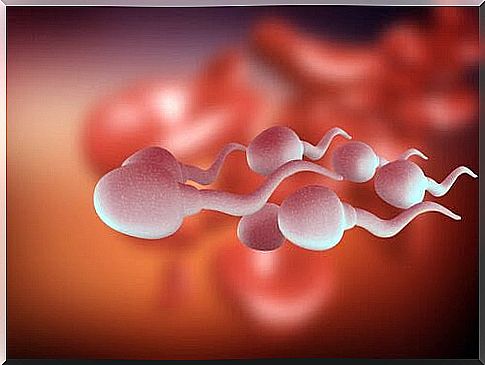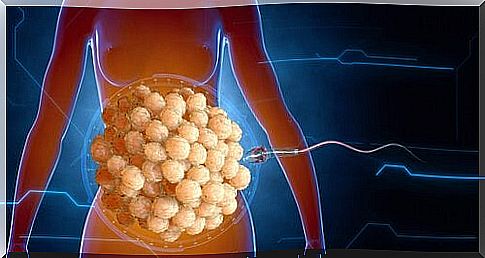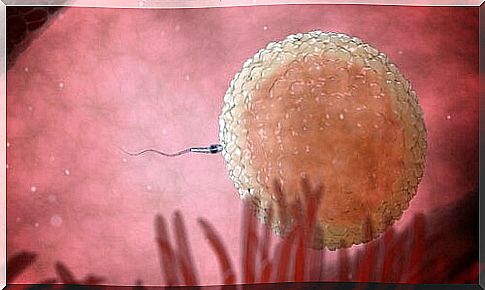Sperm’s Struggle For Survival

The sperm’s struggle for survival begins immediately after ejaculation. Nearly 200 million of these cells compete to reach the woman’s egg to fertilize it. We will describe how this fascinating event takes place below.
Although it may not seem like it, fertilization is one of the most complex processes that can be studied in biology.
Why do sperm fight to survive?
To better understand the struggle of sperm, we need to know more about these cells. Sperm or, spermatozoa, are the male gametes. They are differentiated cells, which means that each of them is completely unique. This also means that the sperm cannot be regenerated in a woman’s body, and they therefore have to fight for their survival.
After ejaculation, uterine contractions and the woman’s immune system cause oxidative stress that damages these cells.
Of course, there are many other obstacles that must be overcome in order to fertilize an egg.
But what does the sperm fight look like? What is so remarkable about it?
Sperm in the female reproductive organs
Once in the vagina, the sperm must reach a distance of 15 to 18 cm to reach the ovaries.
When the presence of semen in the vagina is detected, certain control mechanisms are put in place.
During the time it takes to travel this distance, the future mother’s body generates a kind of backlash.
This reaction is designed to modulate the route of the male gametes as they swim to reach the ovaries.
The first obstacles
The first barrier is related to the woman’s vaginal pH. Because it is acidic (pH about 5), some of the sperm die immediately.
Another obstacle has to do with the woman’s immune system. Because it is an organ that is in contact with the outside world, the vagina has antimicrobial defenses that can also affect male gametes.

Neutralization mechanisms
To counteract these barriers and pass through the vagina, the sperm uses its plasma which provides some protection. Substances that inhibit phagocytosis are excreted.
The pH of this plasma is higher than the pH of the vagina. When the two come in contact, the pH is neutralized, and the male gametes are safe. Another obstacle in the sperm’s struggle for survival has been overcome.
The cervix
The second phase of the sperm’s struggle for survival is now coming. The sperm must pass through the cervix. At this stage, most have already been left along the road.
To facilitate this transition, the cervix secretes a mucus consisting of 96% water, which allows the sperm to penetrate.
Cervical invaginations
Anatomy of the cervix includes invaginations. Sperm can be trapped in these small cavities, and thus prevented from moving on.
Sperm can survive up to 5 days after intercourse. They can therefore leave these invaginations and proceed to conception.
The journey through the womb
If ovulation has already occurred, the mucus will become more watery and thus it is easier for the sperm to penetrate.
Sperm can pass through the uterine cavity in just 10 minutes. This is because the uterus and fallopian tubes perform a contraction that sucks in the sperm and facilitates their arrival at the ovaries.
The fallopian tube
At this point, the gametes must pass into the fallopian tube. It’s the narrowest part of the road.
To move on on their way to the ovary, two changes occur in the sperm. First of all, they become hyperactive and move faster.
Second, the gametes’ plasma membrane changes so that it can pass through the egg’s protective layer.

Proximity to ovum, or egg cell
Hyperactivity is crucial for the sperm to pass over the membrane that covers the egg cell. In addition, a control system is activated in the tubes that leads the sperm to the ovary.
The final phase of the sperm fight
Of the millions of sperm that were injected into the vagina, only a dozen survive to the final stage.
The next barrier is the cells that protect the ovary and must be penetrated. As soon as this happens, one of the sperm releases an enzyme in the acrosome, or the head of the sperm, so that its contents are released. This facilitates fusion between sperm and egg.
Immediately, the egg generates a shell around itself so that no other sperm can fertilize it. This guarantees the further development of the embryo.
This is how sperm must do to fertilize the egg cell. It is a brutal race where only one reaches the goal despite the millions who try.
The rest of the sperm die of fatigue, of abnormal morphology or of the woman’s immune system.









